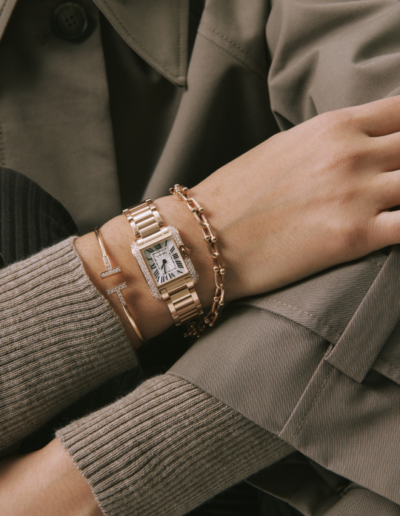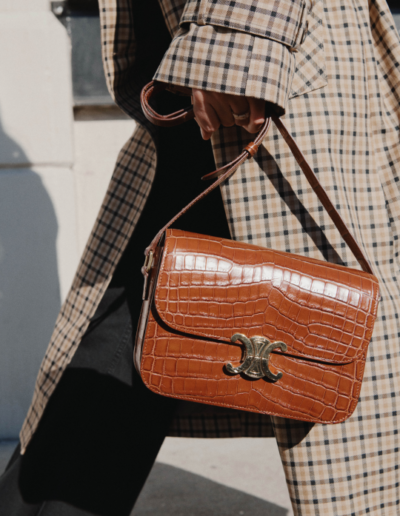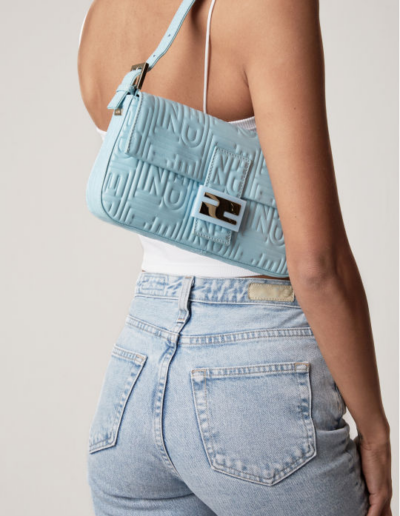KNOWLEDGE
Hermès 101:
History of the legendary house
By James F. July 29, 2020

Hermès is a fashion house that has its roots firmly planted
in a rich tradition of luxury and style. From humble beginnings in equestrian outfitting, to luxury handbags and accessories, Hermès has come a long way, and remains a bulwark for traditional luxury in increasingly uncertain times. Follow us on this journey through time, tracing this fascinating house from Thierry to Nadège.
Thierry Hermès: The Founding of an Empire
[1837-1878]
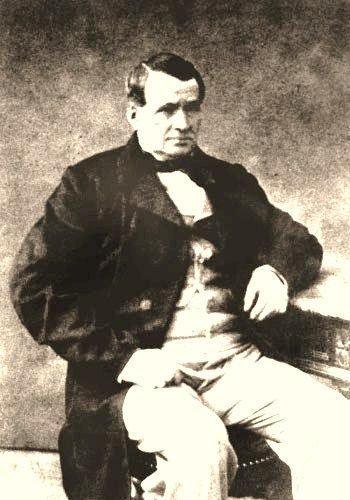
Source Unknown
The Hermès story begins with the originator and founder, Thierry Hermès. Thierry was born on January 10th, 1801 in Krefeld, in what is the modern German region of North Rhine-Westphalia, just outside of Düsseldorf. At the time, this town was part of the recently seized First French Republic, so Thierry was considered a French citizen in the burgeoning First French Empire, under Napoleon Bonaparte. It was in 1828 that the family moved from Krefeld to Paris, after losing a significant portion of its members to disease and as casualties in the ongoing Napoleonic wars.
In 1837, Hermès established his famous maison and opened his doors on the now-defunct Rue Basse-du-Rempart in Paris. Out of this shop, Hermès served to create the highest quality harnesses and bridles for his private clientele, mostly French noblemen and carriage businesses. This remained a very profitable endeavor near the end of the Industrial Revolution. The harnesses were a hit, and Hermès went on to acquire awards for his innovations, including first prize at the 1867 World’s Fair in Paris.
On the 10th of January 1878, in Neuilly-sur-Seine in Paris, Thierry Hermès passed away, leaving the now formidable harness business to his grandsons, Adolphe and Émile-Maurice Hermès.
Adolphe and Émile-Maurice Take the Reins
[1880-1900]
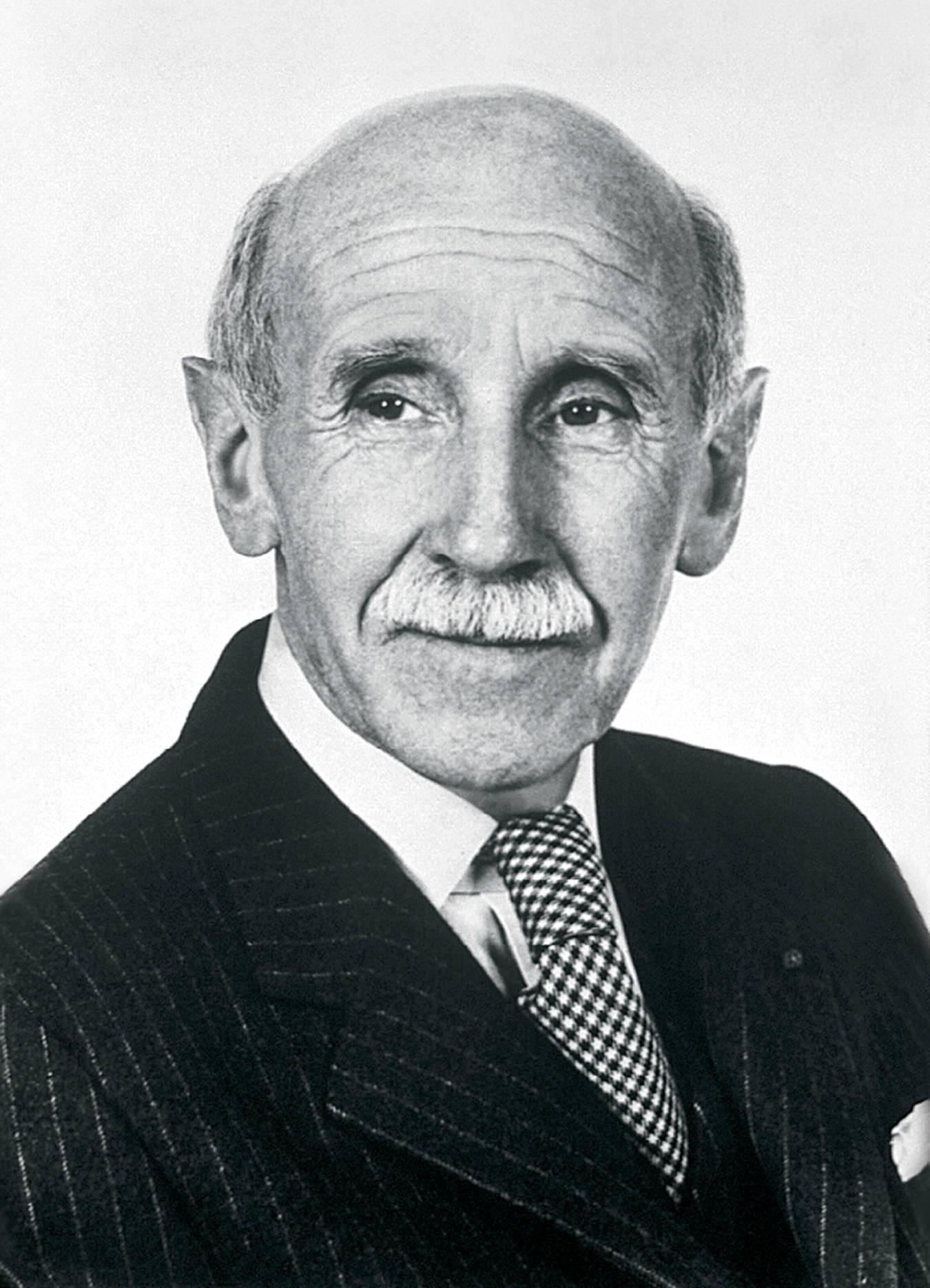
Emile Maurice
Courtesy of Nuvo Magazine
Upon the completion of this transition of management at Hermès in 1880, the first major shift for Hermès was to move the shop from Rue Basse-du-Rempart after the street was demolished in order to expand both Boulevard des Capucines and Boulevard de la Madeleine. The newfound home for Hermès has become the now iconic flagship location at 24 Rue Faubourg Saint-Honoré in the 8th Arrondissement. It is at this location that Adolphe and Émile-Maurice launched a line of saddlery and began to sell all their products in a retail setting to the public for the first time for Hermès. The clientele of the house expanded rapidly, and Hermès began to cater to the needs and desires of the global elite.

24 Rue Faubourg Saint-Honoré c. 1880
Courtesy of W Magazine
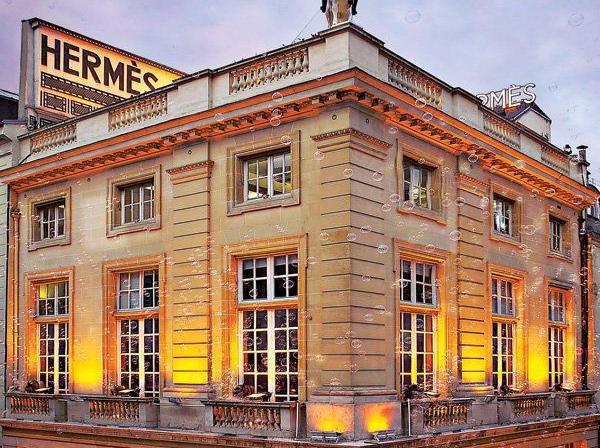
24 Rue Faubourg Saint-Honoré c. Present Day
Courtesy of DolceMag
In 1900, the Hermès brothers launched what was to be the budding of a new era for fashion, luxury goods, and equestrianism: The Haute-à-Courroies bag, later to be known as the HAC Birkin bag. It was designed to meet the needs of riders in order for them to transport the new line of saddlery during travel
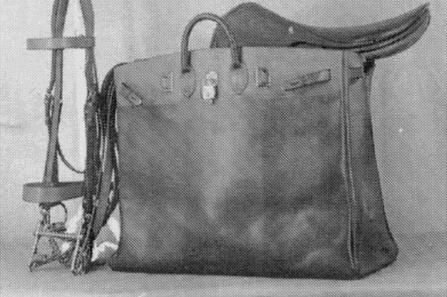
Courtesy of The Chic Selection
Émile-Maurice: The Hermès Frères Era
[1900-1951]
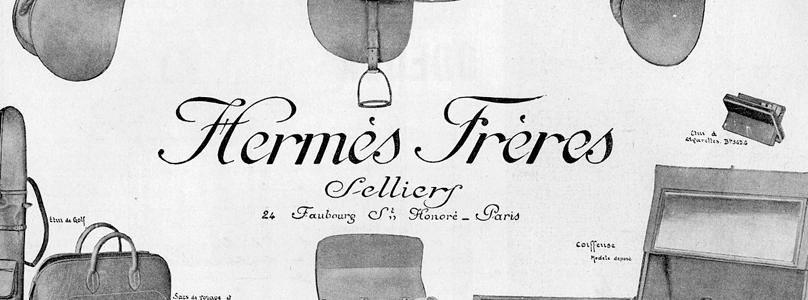
Courtesy of Baghunter
Shortly after establishing the company in their new location, Émile-Maurice renamed the company “Hermès Frères”, and continued to expand the company and its notoriety on the global stage. He took his client list expansion a step further by furnishing the leisure class and royalty with their famous saddlery.
In the early 1900s, Émile-Maurice visited the United States, at which point it was a rising international force in finance and industry. During his journey to America, he crossed paths with Henry Ford, an ambitious industrialist and automobile magnate, who introduced him to the world of the factory workshop. As he proceeded through to Canada on the same tour, Émile-Maurice was introduced to a fresh new tool, the zipper. Seeing great potential for this neat little contraption, Émile-Maurice quickly brought the construction element back to France, and introduced a patent there for the design, becoming the first person to introduce the design in the country. In the late 1910s, Hermès Frères designed the first clothing and handbags with the zipper included. News quickly spread throughout France, and the zipper soon became widely known as the fermature Hermès, or the “Hermès zipper”.
After the immediate success of the zipper, Émile-Maurice brought on the help of his sons-in-law, Robert Dumas-Hermès, Jean-René Guerrand, and Francis Puech, each with their own expertise and visions for the house.
The 1920s and 1930s proved to be a time of incredible expansion for the company. In 1922, Hermès launched their first ever publicly marketed line of handbags for women, and in 1924 Hermès established their first ever international presence in the United States. Later in 1935, the Sac-à-Depêches (later named the Kelly bag) was debuted, and the introduction of the Maison Carré in 1937 brought silk scarves to their expanding repertoire of luxury goods.
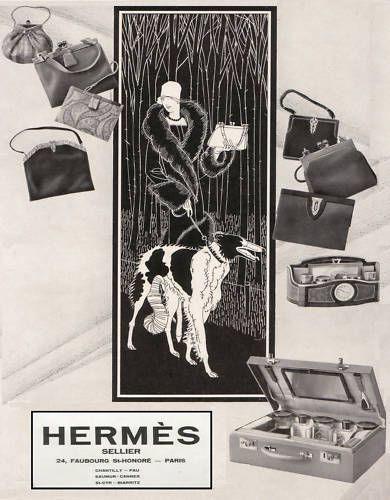
Courtesy of Pinterest
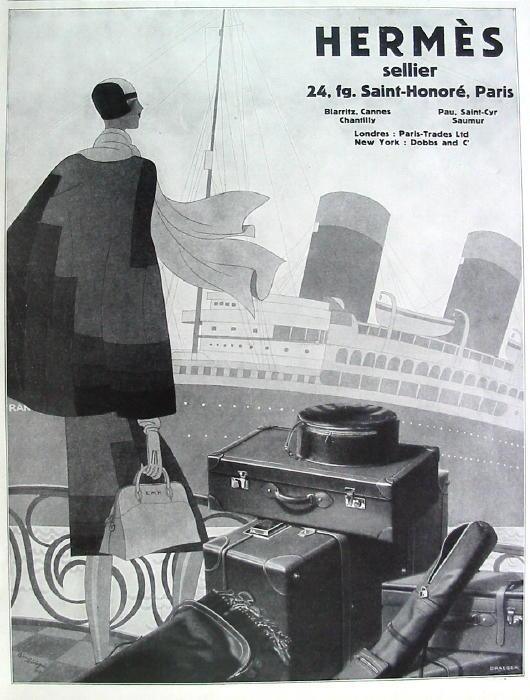
Courtesy of PurseForum
In the 1930’s they expanded into the world of fine timepieces, entering into a pivotal partnership with Universal Genève, the Swiss watchmaker. This partnership allowed Hermès to produce masterful timepieces in the movements of a practiced watchmaker, and Hermès could create just the band. This partnership continued only briefly, however, as Hermès began to bring their watchmaking in house. To round out the decade, in 1939 Hermès brought the now iconic Chaîne d’Ancre bracelet into the fray. A widely used motif within the house’s aesthetic, as well as in their various product lines, the Chaîne d’Ancre is still being used today. An ingenious use of the capital “H” in an interlocking chain pattern, the design became a subtle insignia for the house.
This growth continued through the 1940s, and in 1949 Hermès launched their new line of perfume, dubbed Eau d’Hermès, as well as the Hermès silk tie for men. The fragrances and silk products were later to be some of the houses prime selling products, as they added more designs to the list in the time of Robert Dumas-Hermès.
Robert Dumas-Hermès
[1951-1978]
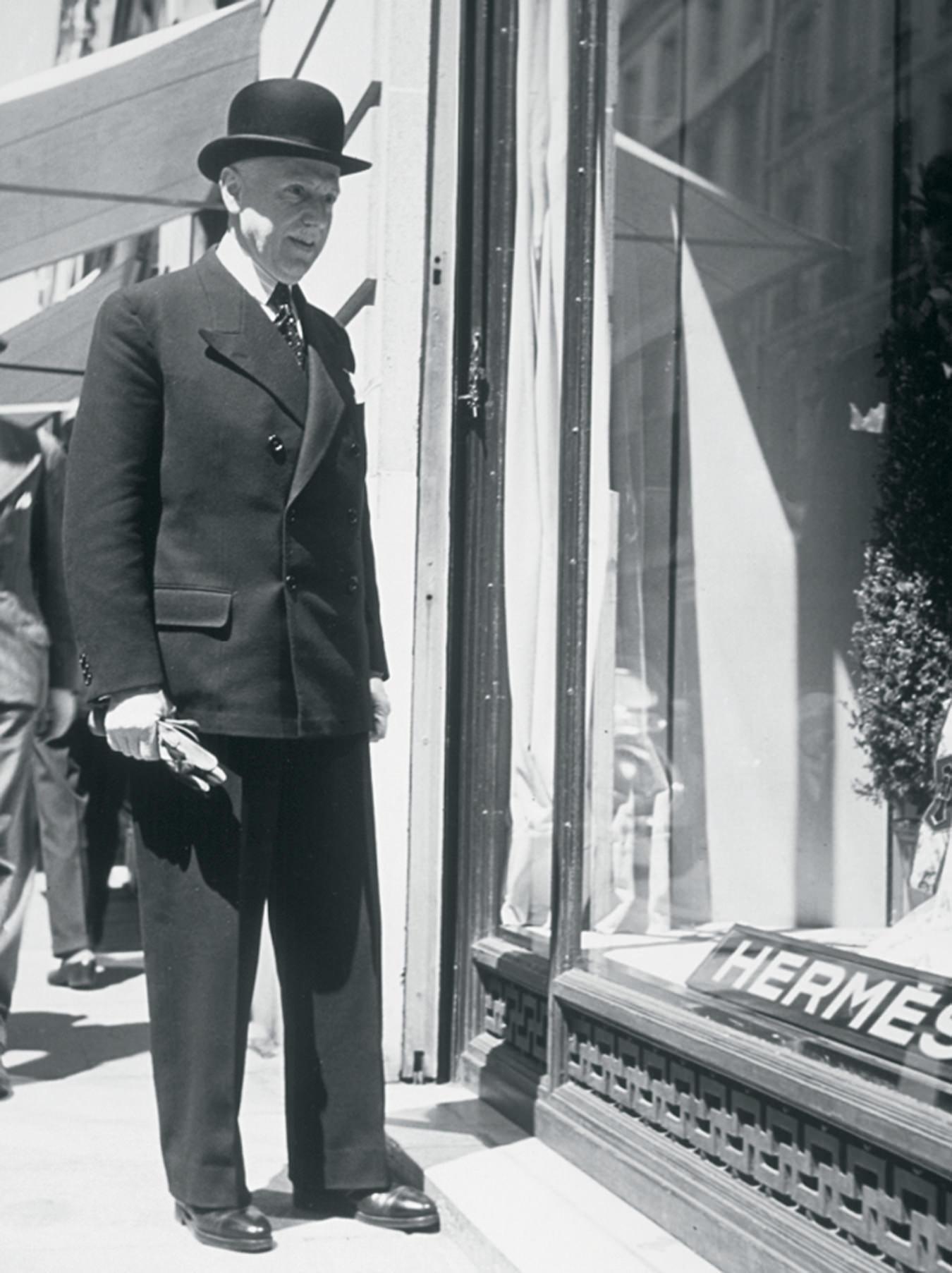
Courtesy of Nuvo Magazine
After the death of Emile-Maurice Hermes, came the ascension of Robert Dumas-Hermes, the first non-descendent director of the illustrious company. Robert was Thierry Hermès’s son-in-law, and attached the Hermès name to his own by way of his wife, Jacqueline Hermès. Robert’s time at the front of the house proved to be critical to the heritage of Hermès as it was in his early years that he created the now ubiquitous horse and carriage logo, and continued to expand the houses many departments, including handbags and leather goods.
In 1956, Hermès truly made its crescendo with a very famous photograph, a very famous princess, and a very famous handbag. That year, the now iconic image of Princess Grace Kelly of Monaco hiding her alleged pregnancy behind the Hermes Sac-a-Depeches appeared in Life Magazine. This photograph spread so far and wide that Hermès eventually adopted the name after it became colloquial among their clientele to describe the bag. This was the moment that ripped them out of the parlors and esoteric circles of global elites, and into the public spotlight as the ultimate luxury house. To round out the decade, in 1959 Hermès created the Constance bag with the creative help of then designer Catherine Chaillet, and named after her newborn daughter.
Hermès continued to have commercial success through the 1960s and 1970s, opening more stores globally and developing new products to fit into their catalog of wares.
In the last stretch of his tenure, Hermès began to decline, attributed by some to their insistence on using the highest quality natural materials while the majority of luxury fashion had begun to move to more technologically engineered materials by the likes of nylon, polyester, and vinyl. These man-made fibers and materials were hugely popular throughout the 1960s and into the 1970s and seemed to threaten the very cornerstones of luxury: quality of craft and quality of material. The future seemed certainly bleak for the Hermès house, and in 1978, the company changed hands once again, this time back to the Hermès family by way of Robert Dumas’s son, Jean-Louis.
Jean-Louis Dumas
[1978-2006]

Courtesy of WWD
Almost immediately after taking charge of the company, Jean-Louis Dumas began to reinvigorate the brand for a new era. He fine-tuned the company’s focus down to three essential product lines: ready-to-wear, silk scarves, and leather goods. This redirection can be seen today in how Hermès positions itself against its competitors in the luxury space. He also renamed the company “Hermès” again, after it was no longer a brother-owned business.
Having invented a number of widely popular handbag designs, Hermès most certainly could make room for one more juggernaut. In the early 1980s, Jean-Louis Dumas was taking an Air France flight from Paris to London and happened to be seated by one very frustrated Jane Birkin. The actress began to vent to Jean-Louis about a problem she was having with her current handbags, and how she could not find one that was both secure and comfortable to carry. Where Jane saw a problem, Jean-Louis saw an opportunity for improvement and quickly came up with a design on a napkin, the only writing material at his disposal in the moment. In 1984, Hermès launched the new design and dubbed it the Birkin bag, after the actress herself. The bag was a astronomical commercial success and helped further the brand’s reputation in leather goods and women’s handbags.
Following this phenomenal success, spanning throughout the 1980s and 1990s, Jean-Louis expanded Hermès’s global business and simultaneously consolidated their stores to include more company-owned ones and decreasing the number of franchised stores, allowing more centralized control over its products.
In 1956, Hermès truly made its crescendo with a very famous photograph, a very famous princess, and a very famous handbag. That year, the now iconic image of Princess Grace Kelly of Monaco hiding her alleged pregnancy behind the Hermes Sac-a-Depeches appeared in Life Magazine. This photograph spread so far and wide that Hermès eventually adopted the name after it became colloquial among their clientele to describe the bag. This was the moment that ripped them out of the parlors and esoteric circles of global elites, and into the public spotlight as the ultimate luxury house. To round out the decade, in 1959 Hermès created the Constance bag with the creative help of then designer Catherine Chaillet, and named after her newborn daughter.
Hermès continued to have commercial success through the 1960s and 1970s, opening more stores globally and developing new products to fit into their catalog of wares.
In the last stretch of his tenure, Hermès began to decline, attributed by some to their insistence on using the highest quality natural materials while the majority of luxury fashion had begun to move to more technologically engineered materials by the likes of nylon, polyester, and vinyl. These man-made fibers and materials were hugely popular throughout the 1960s and into the 1970s and seemed to threaten the very cornerstones of luxury: quality of craft and quality of material. The future seemed certainly bleak for the Hermès house, and in 1978, the company changed hands once again, this time back to the Hermès family by way of Robert Dumas’s son, Jean-Louis.
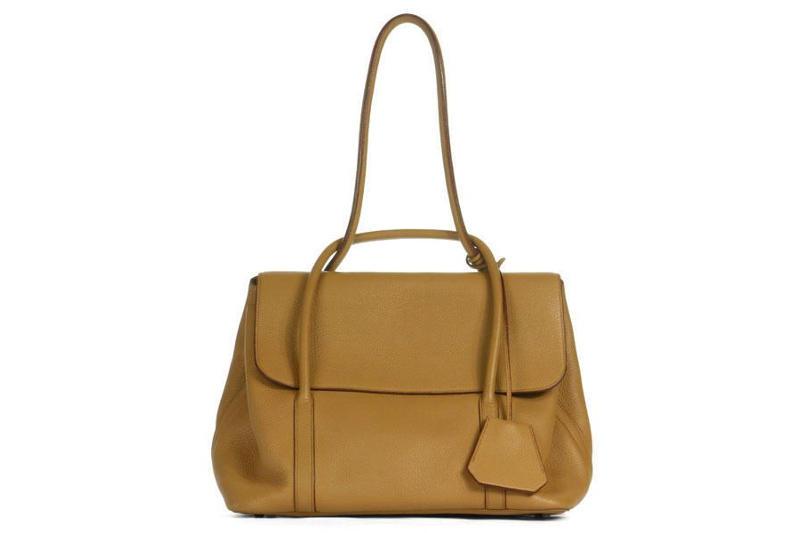
Courtesy of Pinterest
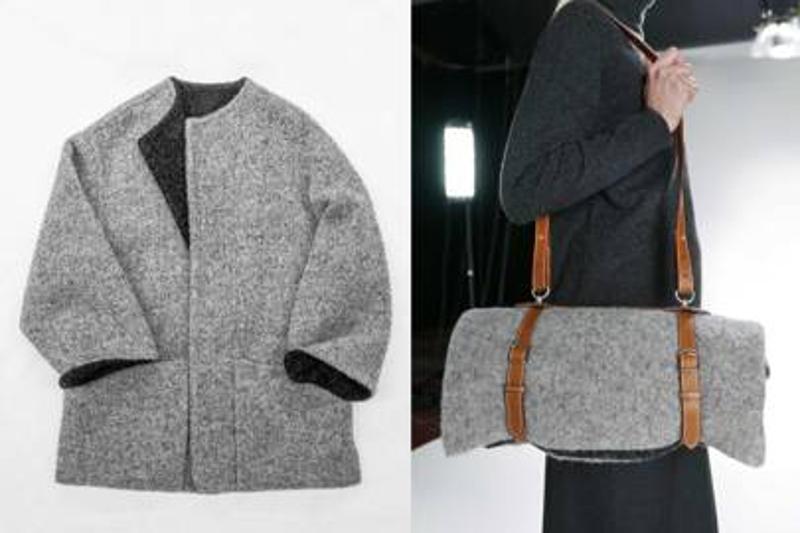
Courtesy of Vogue
He was also to be the first head of the company to bring in outside creative talent in order to innovate. In 1997, Hermès appointed the controversial designer Martin Margiela to lead its ready-to-wear department, which proved to be a successful partnership commercially and aesthetically for the brand. Margiela brought Hermès into the contemporary fashion landscape and established the house as a major force in what was the age of celebrity fashion and the supermodel.
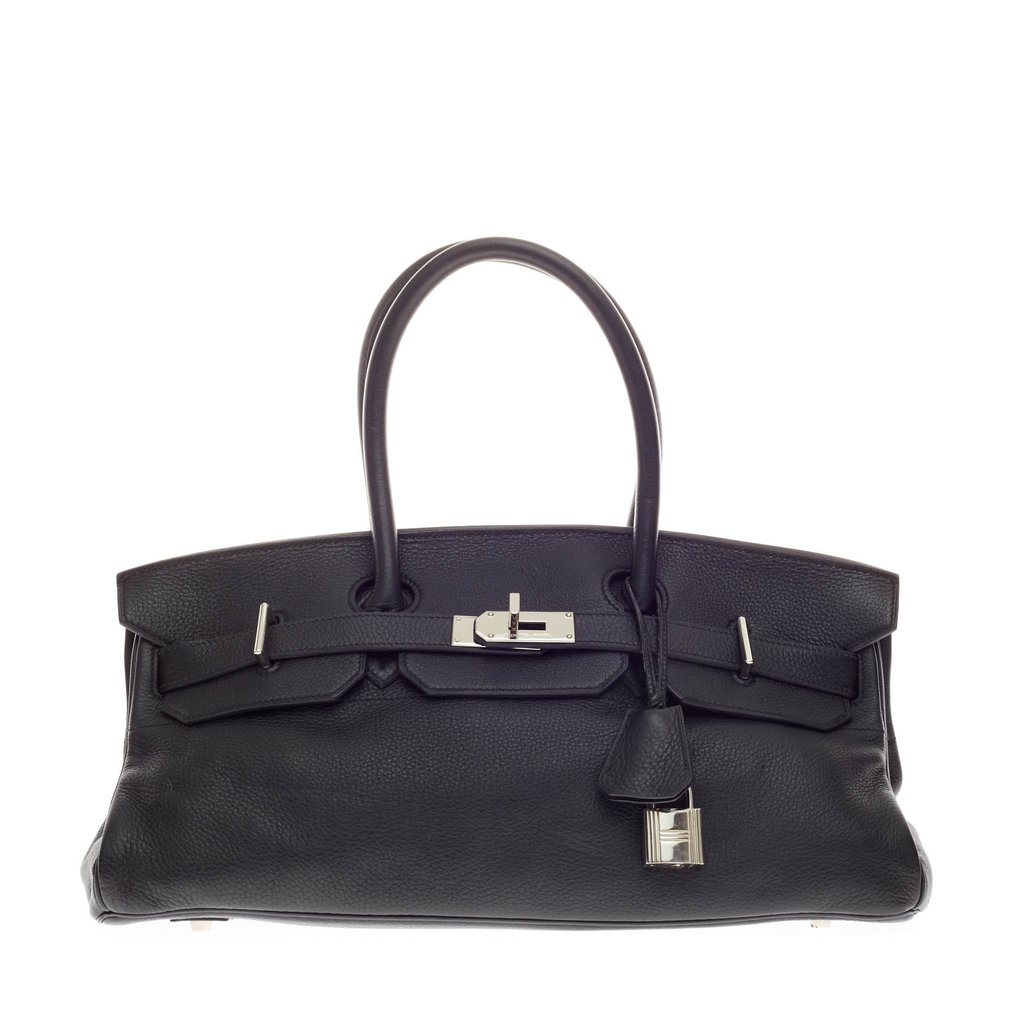
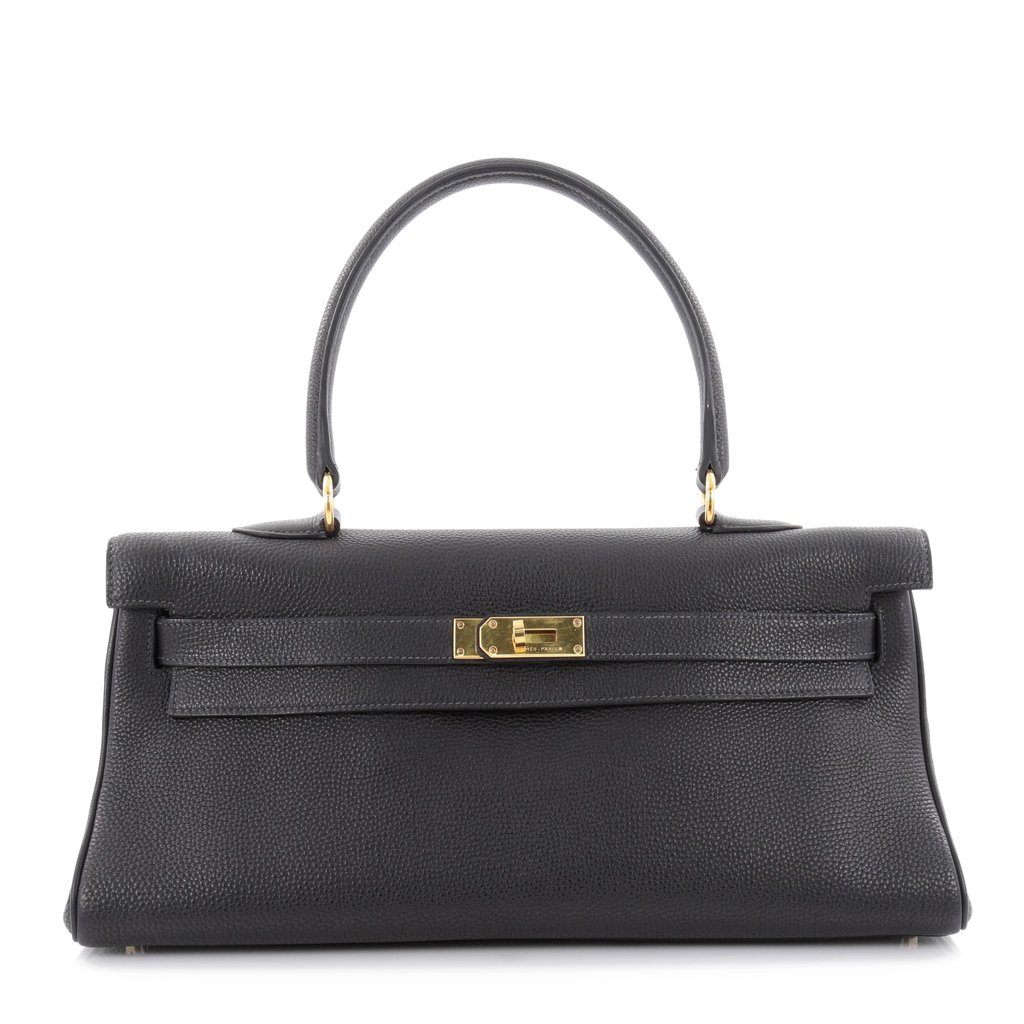
After Margiela left the house in 2003, it was Jean-Paul Gaultier who took the reins of the creative direction. During this time, he took the now emblematic Birkin and Kelly handbags, extended the handles and widened the silhouette to create the Shoulder Birkin and Shoulder Kelly. At this point, given Jean-Louis’s tightening grip on the flow of product and its sale in stores, the two most iconic styles in Hermes history were now harder than ever to get one’s hands on. This was a particularly interesting strategy that became infamous, restricting supply increases exclusivity, and demand follows in step. The strategy allowed for both more central company control, as well as increasing demand. Jean-Louis had created one of the best non-marketing, marketing strategies in fashion history.
By the fall of 2005, Jean Louis had announced he was to retire from his post, and in January of 2006 he handed the company over to a close companion Patrick Thomas as CEO and his son Pierre-Alexis Dumas for the artistic vision.
Pierre-Alexis Dumas
[2006-present]

Courtesy of The Economic times
Under the leadership of Pierre-Alexis Dumas, Hermès has continued it’s very close relationship with outside designers, and strategically implementing their hand in the overall creative direction of the company at large. In 2010 that the creative torch for ready-to-wear was passed to Christophe Lemaire as head designer, who brought with him a minimalist approach to the Hermès look, and created a kind of easy luxury. He streamlined the Hermès aesthetic and paved the way for the next wave in the heritage of the house. In the same year, Hermès launched the “Petit h” line of products with recycling and sustainability at its heart that was spearheaded by Pascale Mussard, the great-great-great-granddaughter of Thierry Hermès. In 2014, Lemaire stepped down to devote more time to his own label.
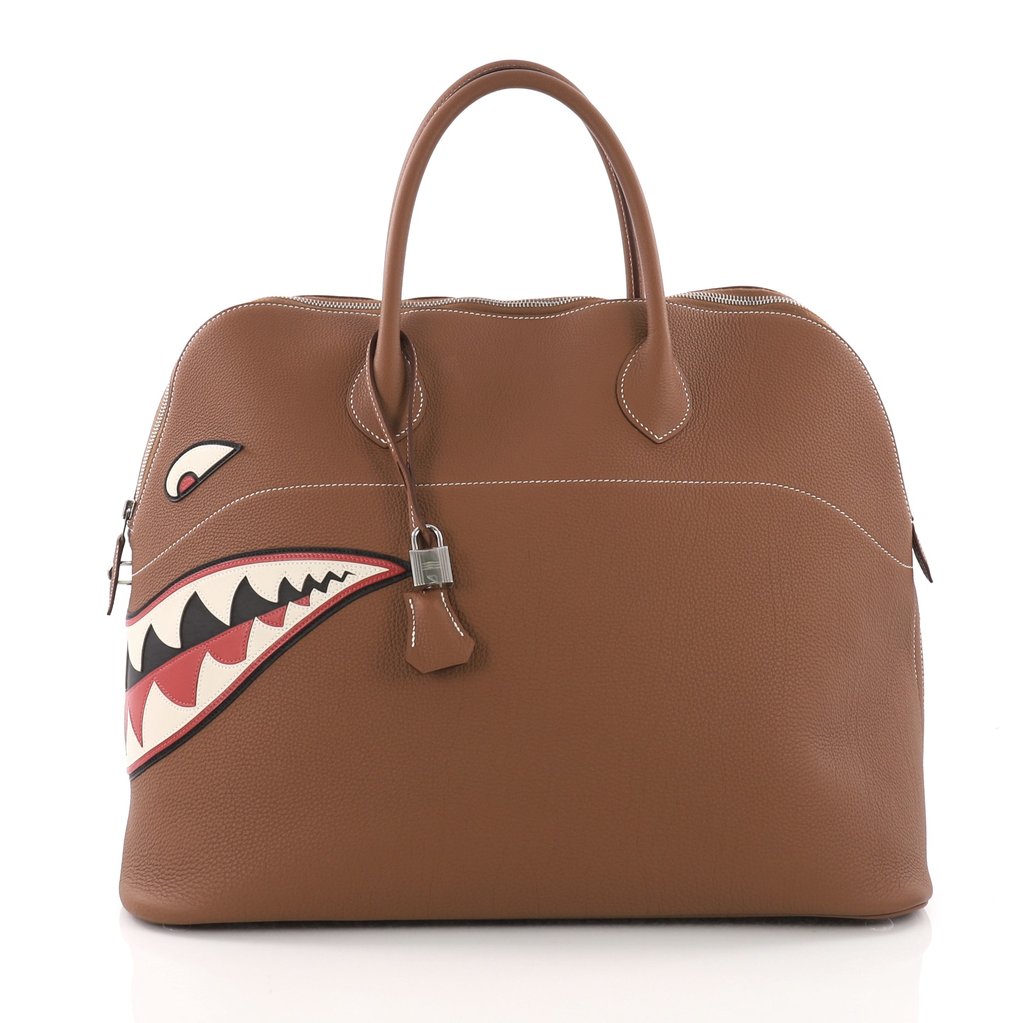
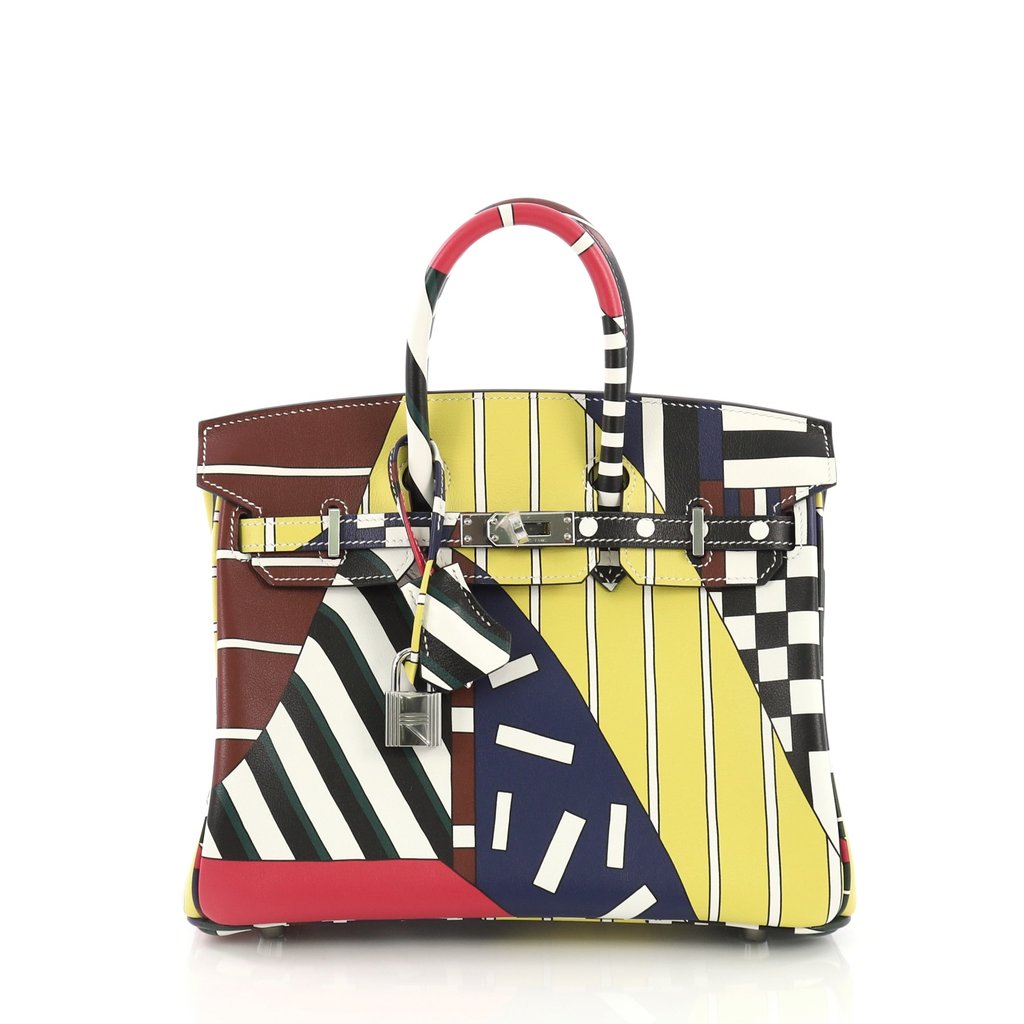
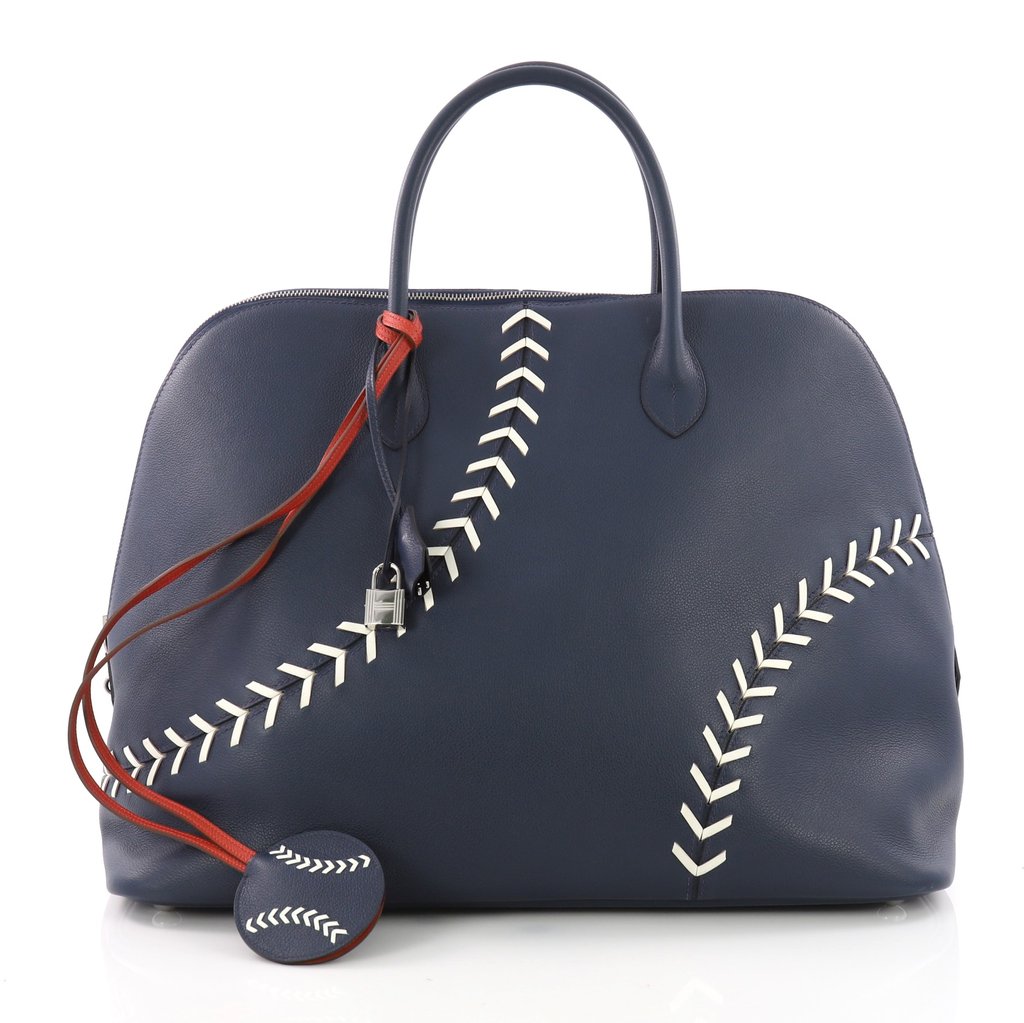
That same year, Nadège Vanhee-Cybulski came to the company, replacing Lemaire. With her at the helm, Hermès has broadened it’s lines of handbags, accessing the archives and creating brand new designs that continue to surprise and fascinate the clientele of the house, even creating novelty styles of the house’s oldest designs, such as the Shark and Baseball Bolide bags, the Mini Kelly II, and the newest addition: The Endless Road bags. She has also collaborated with the artist Nigel Peake to create the One Two Three and Away We Go Birkin and the On A Summer’s Day/Night Constance bags. An embodiment of the playful and easy spirit of contemporary luxury, with admirable respect to the heritage of the astute Maison, Nadège shows no signs of slowing down, and neither does the House of Hermès.
As with any fashion brand the future of Hermès is as uncertain as its past seemed at the time, but it is marked by great leaders and innovations. But one thing is clear, that the unchanging central DNA of this brand is solid and unwavering in its determination to continue the traditions of true luxury in a new era of globalization and ever-evolving attitudes toward what we wear.

